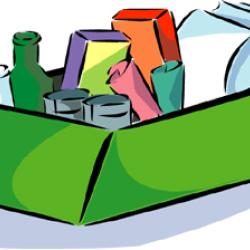Source Institutions
Source Institutions
Add to list Go to activity
Activity link broken? See if it's at the internet archive

Learners explore how recyclers take advantage of the different properties of materials, such as magnetism and density, to separate them from a mixture. They use a magnet and floatation to separate screws, plastic, and aluminum from a mixture of pre-made "trash." The screws are removed from the mixture by a magnet, flotation separates out "trash" like yogurt cups and other plastics, and aluminum and other non-magnetic and non-floating bits of "trash" are left. This activity is part of the Environmental Chemistry unit in OMSI's Chemistry Lab. Material estimates are for 100 uses.
- 30 to 45 minutes
- Under 5 minutes
- 1 cent - $1 per group of students
- Ages 4 - 14
- Activity, Experiment/Lab Activity
- English
Quick Guide
Materials List (per group of students)
- Four medium plastic cups
- One large plastic cup
- One large plastic bowl (or small plastic trash can)
- One rectangular plastic tray (from a microwave meal)
- One slotted spoon
- One magnet
- One 25-ml plastic scoop
- Small strainer
- About 1 to 2 cups of small zinc-plated screws and chains
- About 50 plastic coffee stirrers
- Two or three empty aluminum soft drink cans
Subjects
-
Physical Sciences
- Electricity and Magnetism
- Chemistry
-
Structure and Properties of Matter
- Volume and Density
-
The Nature of Science
- Science and Society
Informal Categories
- Nature and Environment
Audience
To use this activity, learners need to:
- see
- touch
Learning styles supported:
- Uses STEM to solve real-world problems
- Involves hands-on or lab activities
Other
Components that are part of this resource:
This resource is part of:
Access Rights:
- Free access
By:
Rights:
- All rights reserved, Oregon Museum of Science and Industry, 1997
Funding Source:
- National Science Foundation
